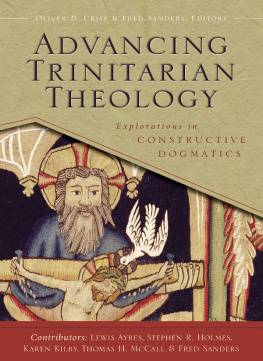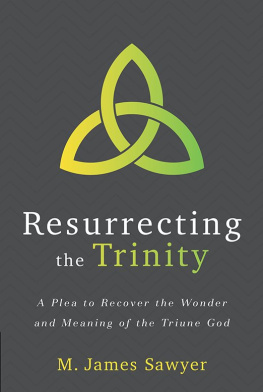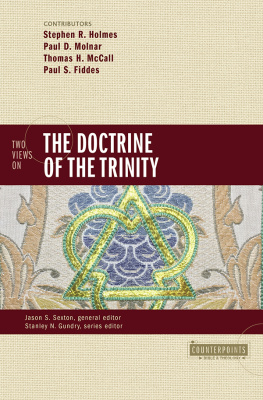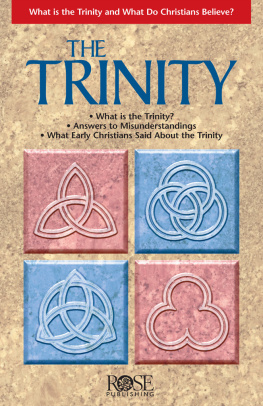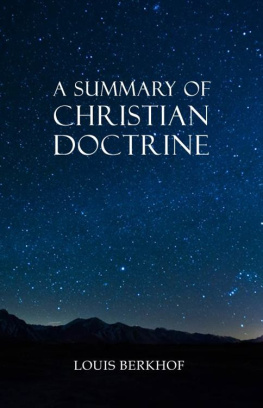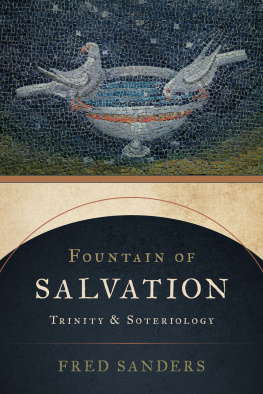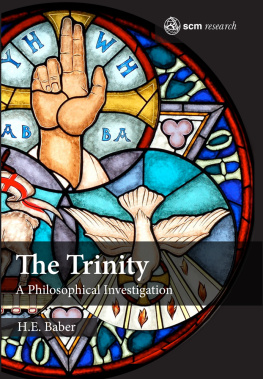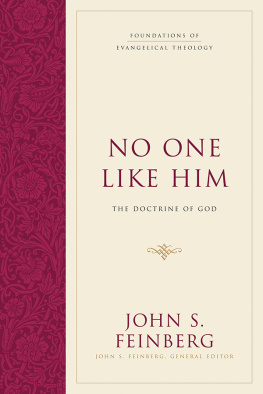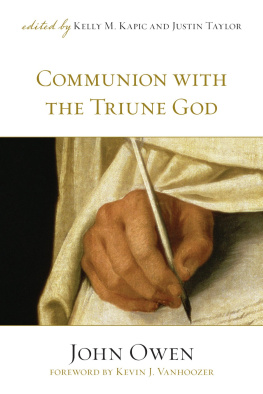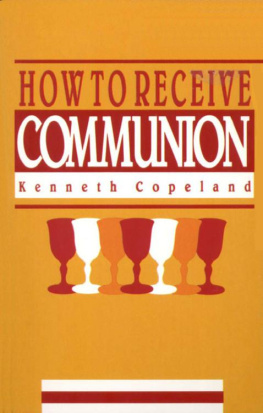A Study Guide For John Owens Communion withGod
Ryan M. McGraw
Copyright 2016, Alliance of Confessing Evangelicals,600 Eden Rd., Lancaster, PA 17601.
All rights reserved.
This booklet may be duplicated in its entirety andwithout edit, including this full disclaimer for personal, smallgroup, non-commercial use. No more than 200 copies may be made. Noelectronic use beyond email is permitted. Any use other than thoselisted herein is forbidden without prior written permission. Allrights reserved.
ARMTP007
Smashwords Edition
Meet the Puritans Resources
The purpose of Meet the Puritans is tointroduce the theology and piety of the seventeenth century EnglishPuritans in particular and of sixteenth-eighteenth century Reformedorthodoxy in general.
Our audience is threefold: first, ReformedChristians who need to reconnect with their heritage; second,evangelical Christians who need to be introduced to this heritage;and third, the world that needs the answer this heritage gives.
Our goals in doing this are instructionconcerning the unsearchable riches of Christ (Eph. 3:8) found inthe writings of the 16th18th centuries so that a new generationwould be filled with love for Christ and his historic church sothat it might serve him in the world more effectively.
With this in mind we present to you thisprint/digital resource.
For more resources, we encourage you to visitour website at www.meetthepuritans.com.
TABLE OF CONTENTS
INTRODUCTION
Apart from Holy Scripture, John Owens Communion with God is themost important book that I have ever read. For most Christians, theTrinity is a carefully defined doctrine that they must believe; yetit has little practical significance. In Communion with God, Owenpresents the doctrine of the Trinity as the most intenselypractical and personal doctrine in Scripture. This book hastransformed my preaching, my prayers, my personal assurance ofsalvation, and its ideas have pervaded virtually every other aspectof practical holiness. For these reasons, I put together this studyguide for the use in Grace Presbyterian Church (Conway, SC), whichI formerly pastored. I hope that it may be used of God to promotethe use of Owens work by many churches as well.
In order to help readers become oriented tothis book, it might help to begin with a brief analysis of some ofOwens most significant contributions to trinitarian piety. Owenargued that though each Person of the Godhead is equal with respectto the being or essence of God, yet believers have a peculiarfellowship or communion with each person distinctly. Each divinepersons is worthy of worship, not because of their distinctpersonal subsistences, but because they hold the divine essence incommon. However, the personal properties of each person and thefunction that each person assumes in accomplishing and applyingredemption provide additional motives for worshiping the true andliving God. After proving that believers have fellowship with theGodhead generally and each person particularly, Owen treated indetail the characteristics of the fellowship that believers havewith each divine person. Using the Trinitarian Blessing of 2Corinthians 13 as a template, Owen used a one-word summary todescribe each part of this communion. Communion with the Father issummarized by love, communion with the Son is characterized bygrace, and communion with the Holy Spirit is characterized byreceiving the comforts of fellowship with all three persons as heapplies them to believers.
The first section of Communion with God,dealing with God the Father, is brief yet profound. According toOwen, the great discovery of the gospel is the love of theFather. Believers usually conceive of the gospel in terms of thelove of Christ that passes knowledge (Eph. 3:19), but since it wasthe Father that chose his elect and planned redemption frometernity past, the Father is the source of love in the Godhead. TheFather could never manifest his love apart from sending the Son todie for the redemption of his elect, but the love of the Fathercompared to the love of Christ is likened to the light of the suncompared to the rays proceeding from the Son. Chapter four isespecially useful from a pastoral standpoint. Owen noted that inlight of the depiction of the great wrath of God against sinnersand that fact that believers were once children of wrath just asthe others (Eph. 2:3), very few believers seem to attain a solidassurance and enjoyment of the Fathers love. In this chapter, Owenprovides practical helps in order to stir up believers to a genuineassurance of the love of the Father.
The second section of Communion with Godaddresses the communion in grace that believers have with the Son.All of Owens writings on the Lord Jesus Christ are masterful and,in a sense, Owen viewed Christology as the central focus oftrinitarian theology due to his role as the only Mediator betweenGod and man. The section treating communion with Christ occupies182 of 274 pages of Owens text (129 pages out of 209 in theabridged version).1 This section includes twoDigressions. The first provides motives to endear Jesus Christ tothe hearts of his people, and the second details reflections on themanner in which Christ is the wisdom of God for our salvation. Inthe abridged version, these digressions have been relabeled aschapters eight and nine. These digressions reflect the heart of aman to whom Jesus Christ was all in all. Owens affection for theSavior is contagious.
After the digressions on Christ, the outlineof the book becomes a bit convoluted. For example, on page 118(Works), Owen presented a four-part outline of the communionbelievers have with Christ. The first two parts of communion withChrist relate to delight (abridged chapter eleven) andvaluation (abridged chapter twelve), each of which Christ and hispeople have for each other. The last two points of the outline,however, depict Christ exercising compassion and supplying ourneeds, while we in turn maintain chastity with him as his bride andperform obedience to him. As Owen developed these themes, thoughall the material is excellent, it is easy for the reader to getlost and not know where he or she is in the outline. Anotherexample is that on page 46 (abridged, 46-47), Owen began discussinga distinction between the personal and purchased grace of Christthat he did not resume until page 154 (abridged, 118). In someways, the abridged text has removed this difficulty by omittingOwens original outline. While making the book more accessible ingeneral, it runs the risk of retaining Owens original flow ofthought, however difficult it may be to trace at points.
Some features that stand out in the sectionon communion with Christ are an outstanding defense of the activeobedience of Christ (pg. 159-164; abridged, 120-124), the relationof adoption to Christology, and an exposition of the nature ofChristian liberty (both in chapter ten; abridged, chapterseventeen). Readers might expect Owens treatment of adoption to beincluded in the section on communion with the Father, but Owencorrectly included it under communion with Christ, since thebelievers union with Christ is the basis for his or her adoption.Sometimes it is easy for Protestants to focus exclusively on theforensic aspects of justification and their relationship to theLord Jesus Christ in a cold and technical manner. Withoutneglecting these vital doctrines, Owen sets them in the warmheartedcontext of the Churchs marriage union with her Lord.
The last section of Communion with Goddirects the readers toward communion with the Holy Spirit.Communion with the Spirit is summarized in terms of comfort, dueto the fact that the Spirit is the source of every comfort andpersonal application of the promises of the gospel. Withoutcommunion with the Sprit of God, there would be no communion withthe Father or the Son. The Spirit works by glorifying Jesus Christin the hearts of believers so that they come to the Father throughhim. Chapter two of this section (chapter nineteen, abridged)emphasizes the habits of sanctification instilled by the Spiritinto the souls of believers. Owen used the term sanctification inthis chapter to describe a disposition towards holiness produced bythe Spirit of God in believers, which included a decisive breachwith the power of sin and which was the source of all actual actsof personal godliness. Chapter three helpfully includes nineaspects of communion with the Holy Spirit (abridged, chapternineteen, which has reduced these to seven).


